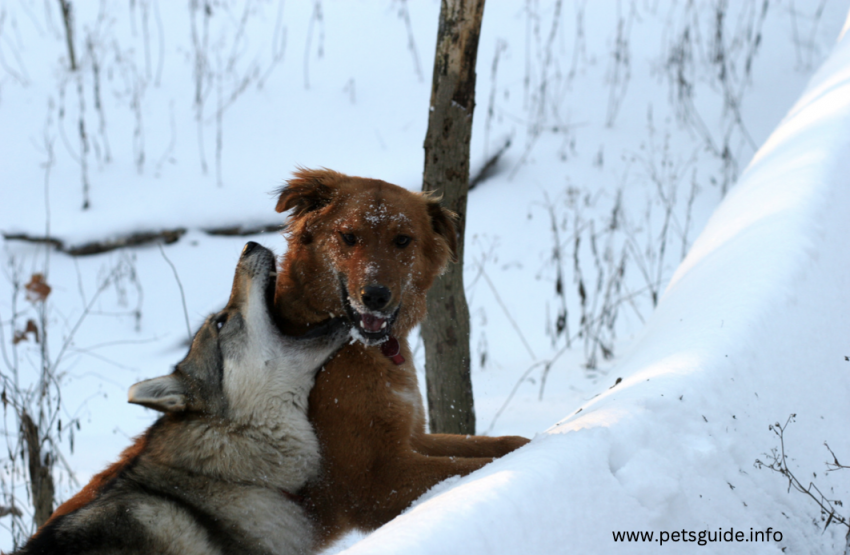Animals
Is it common for wolves to attack humans? (+ Types of Wolves Attacks)
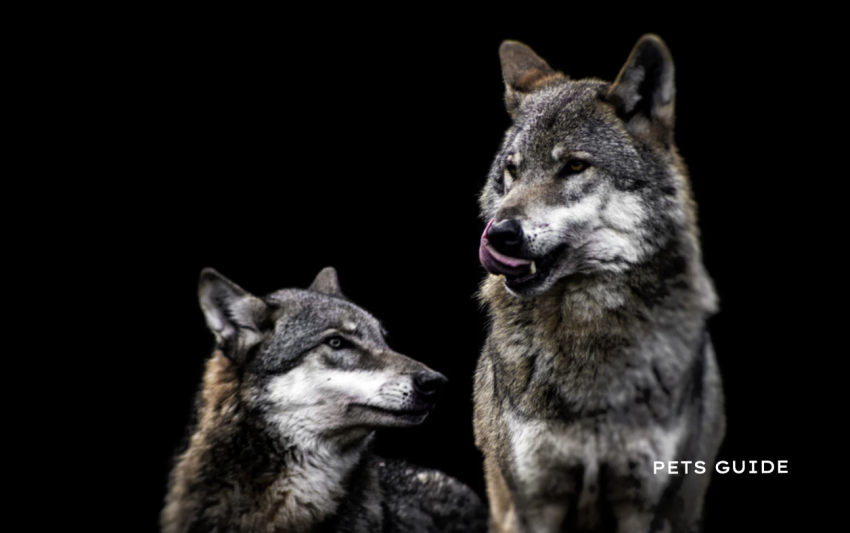
Is it common for wolves to attack humans in the wild + Types of Wolves Attacks
Wolves are fascinating animals that have captured the imagination of many people. They are also one of the most misunderstood and feared creatures in the world.
In this blog post, I will explore the facts and myths about wolf attacks on humans, and how you can avoid them if you encounter a wolf in the wild.
What are the chances of a wolf attack?
According to the latest research by the Norwegian Institute for Nature Research, which studied worldwide data from 2002 to 2020, the risks associated with a wolf attack are “above zero, but far too low to calculate.”
The researchers found 26 fatal attacks by wolves across the world, of which 14 were due to rabies. Most of the attacks occurred in Turkey, Iran, and India, where wolves are more likely to come into contact with humans and domestic animals.
In North America and Europe, where wolves have been persecuted and reduced in numbers for centuries, wolf attacks are extremely rare.
There were only two fatal attacks in North America in the past 18 years, one in Canada in 2005 and one in Alaska in 2010. Both cases involved unusual circumstances, such as an open garbage dump near a remote mining camp or a lone female jogger on a rural road.
In Europe, there have been no recorded fatal attacks by healthy wolves since 1974.
Why do wolves attack humans?
Wolves are not naturally aggressive towards humans. They are shy and elusive animals that prefer to avoid confrontation. However, there are some situations that can trigger a wolf attack, such as:
Rabies:
Rabid wolves lose their fear of humans and become more aggressive. They may bite anything that moves, including humans. Rabies is a fatal disease that affects the nervous system of mammals. It can be transmitted through saliva or blood. If you suspect that a wolf is rabid, stay away from it and report it to the authorities.
Provocation:
Wolves may attack humans as a defensive reaction if they feel threatened or cornered. This can happen if you approach a wolf too closely, especially if it has pups or a carcass nearby. Wolves are also territorial and may defend their den or pack from intruders. If you encounter a wolf in the wild, do not make eye contact, run away, or act aggressively. Instead, back away slowly and calmly while making noise.
Predation:
Wolves may attack humans as a potential prey item if they are hungry or desperate.
This can happen if wolves have lost their natural prey due to habitat loss or overhunting, or if they have become habituated to human food sources such as garbage or livestock.
Predatory attacks are more likely to occur at night or in remote areas where humans are scarce. If you are camping or hiking in wolf country, take precautions such as storing food securely, keeping pets on leash, and carrying bear spray.
How to prevent wolf attacks?
The best way to prevent wolf attacks is to respect wolves as wild animals and avoid situations that could provoke them. Here are some tips to follow if you live or recreate in areas where wolves are present:
Educate yourself:
Learn about wolves and their behavior, ecology, and conservation status. Understand their role in the ecosystem and their benefits for biodiversity and human health. Appreciate their beauty and intelligence without romanticizing or demonizing them.
Coexist peacefully:
Support efforts to protect and restore wolf populations and habitats. Support non-lethal methods of reducing conflicts between wolves and humans, such as fencing, guard dogs, compensation schemes, and community outreach. Report any illegal activities such as poaching or harassment of wolves to the authorities.
Be prepared:
If you plan to visit wolf country, do some research beforehand and follow local regulations and recommendations. Carry a map, compass, flashlight, whistle, first aid kit, and bear spray. Travel in groups and stay on marked trails.
Avoid areas where wolves have been sighted or where signs of their presence are evident (such as tracks, scat, or howling).
If you encounter a wolf, do not panic or run away. Instead, act confidently and assertively. Make yourself look big by raising your arms or jacket. Make noise
Are wolf attacks common in the wild?
While this is a matter of some controversy, the answer appears to be “no.”
The vast majority of wolf attacks on people occur in captivity, when wolves are housed with people who have created situations in which wolves may become aggressive.
Out in the wild, wolf attacks on humans are rare, and typically only happen when wolves are defending their pack or young.
If you do happen to see a wolf in the wild, the best thing to do is stay calm and back away slowly. If you need to take action, try to create a distraction by clapping your hands or throwing something noisy (like a can opener) towards the wolf.
How common Are Wolf attacks?
It’s important to be aware of wolves in the wild. They can be dangerous, and have been known to attack humans.
However, wolf attacks are relatively rare. So, the chances of being attacked by a wolf are slim. However, it’s always important to be aware of your surroundings, and to avoid coming into contact with them.
If an attack does happen, fight back! And lastly, keep in mind that wolf attacks are relatively rare, but they do happen so often. So, always be prepared for the worst.
Wolves rarely pose a threat to people.
Wolves are wild animals, but the vast majority of the time they pose no threat to people.
When wolves encounter people, it is usually for food or as a result of human persecution (i.e., hunting). They are predators and feed mainly on deer, elk, and other large mammals.
Wolves rarely attack humans unless they are provoked – usually by cars or dogs running at them from behind.[/edit] In the wild, wolves typically live in packs of up to 20 individuals.
What to do if you See a wolf?
Wolves are wild animals that usually avoid humans, but sometimes they may come close to people or their pets.
There’s a lot of wild animal speculation going around these days, and wolves are no exception. Some people are convinced that wolves are prone to attacking humans in the wild, while others claim that this isn’t the case at all.
The truth is, we just don’t know for sure – and that’s why it’s important to be safe.
If you see a wolf, the best thing to do is report it to your local authorities as soon as possible. This will help them track the wolf and protect the public from any danger it may pose.
Always be aware of your surroundings and stay away from packs of wolves if possible.
If you do encounter a wolf, the safest course of action is to stay calm and avoid confrontation.
If you encounter a wolf, here are some tips to stay safe and avoid conflict:
- Do not run or turn your back. This may trigger the wolf’s chase instinct and make it more likely to attack.
- Do not approach or try to touch the wolf. Keep a safe distance and respect its space.
- Do not feed or throw food to the wolf. This may encourage it to associate humans with food and lose its fear of people.
- Do not act aggressively or make loud noises. This may provoke the wolf or make it feel threatened.
- Do stand tall and make yourself look bigger. You can raise your arms, wave a stick, or throw rocks or other objects at the wolf if it comes too close.
- Do back away slowly and calmly. Try to maintain eye contact and watch for signs of aggression, such as baring teeth, growling, or lowering ears.
- Do seek shelter in a nearby building, car, or tree if possible. If you are with other people, stay together and form a group.
- Do report any wolf sightings or encounters to the local authorities or wildlife agency. This can help them monitor the wolf population and prevent future conflicts.
Types of Wolves Attacks
Wolves are social animals that live in packs and hunt together. They usually avoid humans and rarely attack them.
However, there are some situations where wolves may become aggressive and pose a threat to people or livestock. We will explore the different types of wolves attacks and how to prevent them.
#1. Predatory attack:
This is when a wolf or a pack of wolves sees a human as prey and tries to hunt them down.
Predatory attacks are very rare and usually occur in remote areas where wolves have little contact with humans. They may also happen when wolves are starving or diseased. Predatory attacks are often fatal and difficult to escape.
#Defensive attack:
This is when a wolf or a pack of wolves feels threatened by a human and tries to protect themselves or their territory.
Defensive attacks may happen when humans encounter wolves unexpectedly, especially near their dens or kills. They may also happen when humans provoke or harass wolves, such as by throwing rocks or shooting at them.
Defensive attacks are usually less severe and can be avoided by backing away slowly and calmly.
#3. Rabid attack:
This is when a wolf is infected with rabies, a viral disease that affects the brain and causes aggression and madness.
Rabid attacks are very rare and can be prevented by vaccinating domestic animals and avoiding contact with wild animals that show signs of rabies, such as foaming at the mouth or acting strangely.
Rabid attacks are always fatal if not treated immediately.
#4. Provoked attack.
This is when a wolf is injured, trapped, or captured by a human and tries to bite or scratch them out of fear or pain.
Provoked attacks may happen when humans try to rescue or handle wolves that are caught in snares, traps, or cages. They may also happen when humans keep wolves as pets or feed them in captivity.
Provoked attacks are usually minor and can be prevented by leaving wolves alone and respecting their wild nature.
#5. Hybrid attack.
This is when a wolf-dog hybrid, a cross between a wolf and a domestic dog, attacks a human. Hybrid attacks are more common than pure wolf attacks because hybrids are more likely to live near humans and have less fear of them.
However, hybrids are also more unpredictable and dangerous than pure wolves because they lack the social skills and instincts of their wild ancestors. Hybrid attacks can be prevented by banning or regulating the breeding and ownership of wolf-dog hybrids.
These are the main types of wolves attacks that humans may encounter.
To reduce the risk of being attacked by wolves, it is important to follow some safety tips:
- Do not approach or feed wolves or wolf-dog hybrids.
- Do not disturb wolves’ dens or kills.
- Do not camp or hike alone in areas where wolves are present.
- Do not run or scream if you encounter a wolf. Stand your ground and make yourself look big and loud.
- Carry pepper spray or a firearm for self-defense if legal and necessary.
- Report any wolf sightings or incidents to the local authorities.
Wolves are magnificent creatures that play an important role in the ecosystem. They deserve our respect and admiration, but also our caution and awareness.
Are wolves dangerous to humans?
There have been a few rare occasions where wolves have attacked humans, but in general they pose no danger to humans. Wolves are not naturally aggressive and will usually avoid people if they can.
However, these incidents are usually due to human-caused stimuli – such as baiting or hunting humans for sport. In fact, the vast majority of wolf attacks on people occur as a result of human activity rather than wolf aggression!
Key Points…
When interacting with wolves, it is always important to remember that they are wild animals and can get quite aggressive. It’s also important to stay calm and avoid provoking them in any way possible.
Attacks by wolves on humans are extremely rare, but do happen when people behave aggressively towards the wolf pack or if the wolf feels threatened. In these cases, the best thing to do is try and flee as fast as possible.
Frequently Asked Questions
What should I do if I’m attacked by a wolf?
If you’re attacked by a wolf in the wild, the most important thing to do is make as much noise as possible and try to run away.
Wolves are usually stronger than humans and can injure or kill you if the attack is particularly fierce. If the wolf is following you, try to distract it with something shiny such as a key chain or cell phone.
If it’s not possible to get away, try to fight back with whatever you have available – fists, stones, a knife – but be very careful because wolves are usually much stronger than humans.
How common is it for wolves to attack humans in the wild?
Since wolves are wild animals and can be aggressive at times, it’s not uncommon for them to attack humans in the wild. Attacks can be fatal as wolves are known for their fierce bites and teeth.
In fact, it is estimated that up to 50% of wolf attacks on humans result in fatalities, with the majority of attacks occurring when the wolf feels its pack is under threat and it’s trying to protect them.
Is it safe to be out in the wild when there are wolves around?
If you’re ever in the wild and there are wolves around, the best course of action is to stay put and call for help.
Wolves are apex predators and as such, they can smell human blood from a great distance.
Attacks by wolves on humans are very rare, usually happening when the pack is feeling threatened or when one of their members has been injured. So, as long as you’re aware of your surroundings and know how to respond if something goes wrong, you should be okay.
Will wolves attack humans in the wild?
Yes, wolves will attack humans in the wild. Although these attacks are relatively rare, they do happen when wolves feel threatened or cornered by people.
Keep in mind that this is a matter of instinctual aggression and doesn’t happen often as it is usually a matter of wolf pack dynamics.
Will a wolf attack a human for no reason?
It’s important to remember that wolves are pack animals and will usually attack members of their pack if they feel threatened. This means that the wolf is defending itself and its pack against a threat. Although it’s rare for a wolf to attack someone without reason, it does happen from time to time.
If you’re ever in the unfortunate situation of being attacked by a wolf, the best thing to do is scream as loudly as possible and try to run away as fast as you can.
Never attack or try to harm the wolf in any way – this only creates more fear and tension in the wolf’s mind and may lead to even worse consequences.
Will a wolf attack you if it sees you?
Yes, it is very common for wolves to attack humans in the wild. In fact, there have been cases where people were mauled to death by wolves.
Even if you are familiar with wolves and know how to handle them, it’s still important to remember that they will attack if they feel threatened or angry. So always be cautious when out in the wilderness, and keep your distance from wolf packs if at all possible.
What to do if a wolf approaches you?
If you’re approached by a wolf, the best thing to do is to try to back away slowly and quietly. If necessary, use pepper spray to deter the wolf from attacking.
If the wolf attacks, the best thing to do is to try and defend yourself as best as possible. Be sure to aim for the wolf’s nose and shake the can vigorously until they scatter.
Remember, don’t make too much noise – this may only embolden the wolf.
Conclusion
There has been a lot of speculation online about wolves attacking humans. However, the truth is that wolf attacks are rare and they typically only happen in situations where humans are threatening the wolf’s pack or cubs.
In the vast majority of cases, wolves will run away if they see a human.
If you are ever in the wild and see a wolf, the best course of action is to stay calm and let the wolf go.
Animals
The Ethics of Animal Testing: Navigating the Complex Intersection of Science and Compassion
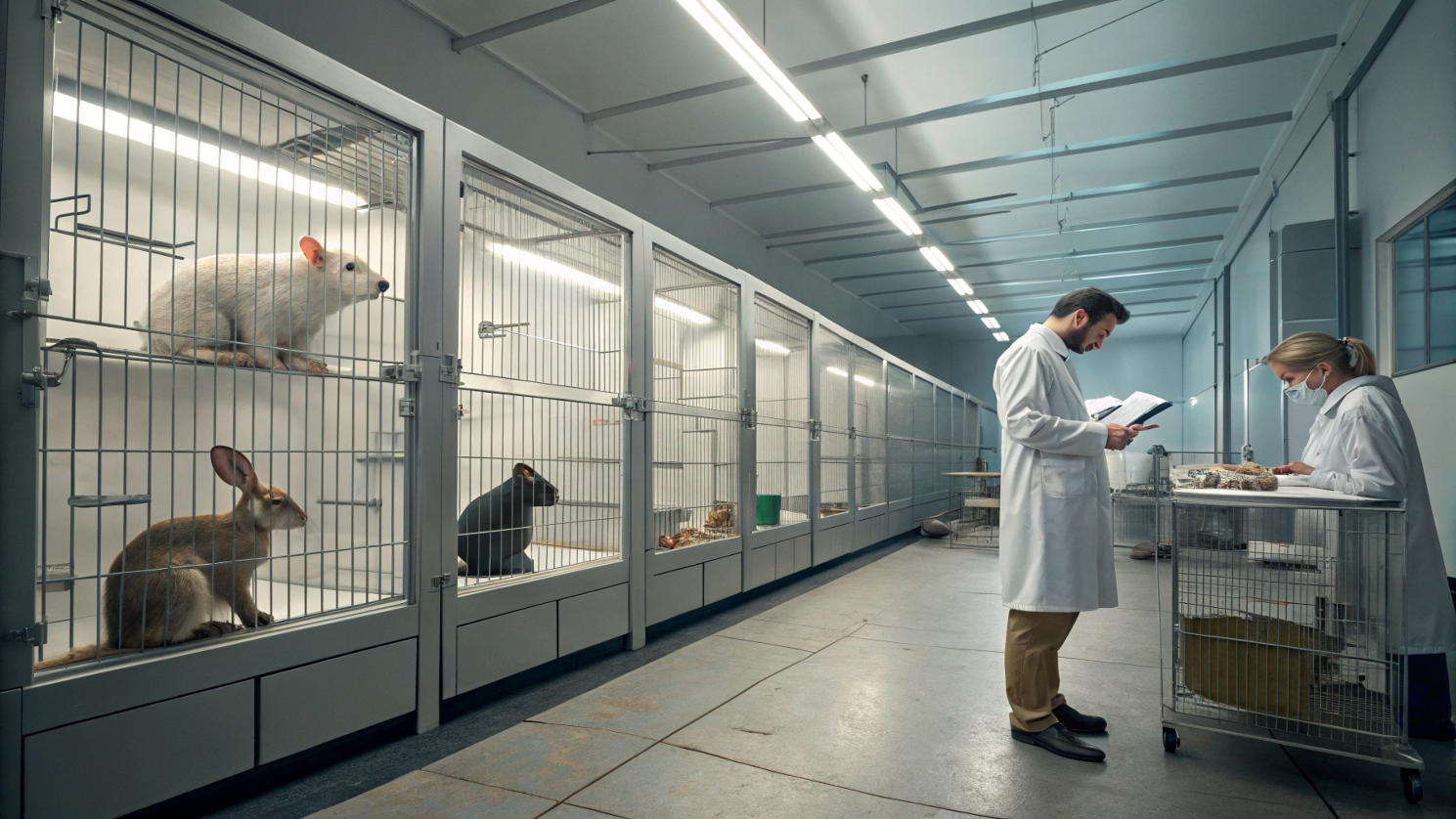
Animal testing has long been a contentious issue, sparking debates that span scientific, ethical, and philosophical domains. On one hand, animal testing has played a crucial role in advancing medical research, leading to breakthroughs in the treatment of diseases, the development of new drugs, and the understanding of biological processes.
On the other hand, the use of animals in experiments raises significant ethical concerns about animal welfare, the moral implications of causing suffering, and the validity of extrapolating results from animals to humans.
This article delves into the ethics of animal testing, exploring the arguments for and against it, the current state of regulations, and the ongoing quest to find alternatives that balance scientific progress with compassion for animals.
The Role of Animal Testing in Science
Historical Contributions
Animal testing has been instrumental in numerous scientific advancements. For instance, the development of vaccines for diseases such as polio and rabies relied heavily on animal experiments. Similarly, the discovery of insulin and the development of antibiotics were made possible through research involving animals.
Current Applications
Today, animal testing is used in a variety of fields, including:
- Medical Research: Testing new drugs, treatments, and surgical procedures.
- Toxicology: Assessing the safety of chemicals, cosmetics, and other products.
- Basic Science: Understanding biological processes and disease mechanisms.
Case Study: The Development of the Polio Vaccine
The development of the polio vaccine in the mid-20th century is a prime example of the importance of animal testing. Researchers used monkeys and mice to test the safety and efficacy of the vaccine before it was administered to humans, leading to the eventual eradication of polio in many parts of the world.
The Ethical Debate
Arguments in Favor of Animal Testing
Arguments Against Animal Testing
Case Study: The Thalidomide Tragedy
The thalidomide tragedy is a stark example of the limitations of animal testing. Thalidomide was tested on animals and deemed safe, but it caused thousands of birth defects in humans. This case highlights the potential for discrepancies between animal and human responses to drugs.
Current Regulations and Ethical Guidelines
International and National Regulations
Animal testing is subject to regulations and guidelines that vary by country. In the United States, the Animal Welfare Act and the Public Health Service Policy on Humane Care and Use of Laboratory Animals provide a framework for the ethical treatment of animals in research. The European Union has implemented the Directive 2010/63/EU, which sets strict standards for animal testing and promotes the use of alternatives.
The 3Rs Principle
The 3Rs principle—Replacement, Reduction, and Refinement—is a cornerstone of ethical animal testing. It advocates for:
- Replacement: Using alternative methods, such as computer modeling and in vitro studies, to replace animal testing.
- Reduction: Minimizing the number of animals used in experiments.
- Refinement: Improving experimental procedures to minimize pain and distress.
The Quest for Alternatives
In Vitro and In Silico Methods
Advances in technology have led to the development of alternative methods that reduce or eliminate the need for animal testing. In vitro methods, such as cell cultures and tissue engineering, allow researchers to study biological processes without using animals. In silico methods, such as computer modeling and simulation, provide tools for predicting the effects of drugs and chemicals.
Case Study: The Human-on-a-Chip
The “human-on-a-chip” is an innovative technology that uses microfluidic devices to mimic human organ systems. This technology has the potential to revolutionize drug testing by providing more accurate and ethical alternatives to animal models.
Public and Scientific Opinion
Public opinion on animal testing is divided, with many people calling for stricter regulations and the development of alternatives. Within the scientific community, there is growing interest in finding alternatives to animal testing, driven by ethical concerns and the limitations of animal models.
Conclusion: Striking a Balance
The ethics of animal testing is a complex and multifaceted issue that requires a delicate balance between scientific progress and compassion for animals. While animal testing has contributed to significant advancements in science and medicine, it is crucial to continue exploring and implementing alternatives that minimize animal suffering and address the ethical concerns surrounding the use of animals in research.
Frequently Asked Questions (FAQs)
1. What is animal testing?
Animal testing, also known as animal experimentation, is the use of animals in scientific research to study biological processes, test the safety and efficacy of drugs and chemicals, and develop new medical treatments.
2. Why is animal testing controversial?
Animal testing is controversial because it raises ethical concerns about animal welfare, the moral implications of causing suffering, and the validity of extrapolating results from animals to humans.
3. What are the alternatives to animal testing?
Alternatives to animal testing include in vitro methods, such as cell cultures and tissue engineering, and in silico methods, such as computer modeling and simulation.
4. What is the 3Rs principle?
The 3Rs principle—Replacement, Reduction, and Refinement—advocates for the use of alternatives to animal testing, minimizing the number of animals used, and improving experimental procedures to minimize pain and distress.
5. How can individuals support ethical animal testing?
Individuals can support ethical animal testing by advocating for the development and use of alternatives, supporting organizations that promote animal welfare, and staying informed about the issues surrounding animal testing.
References
Links
Animals
The Evolution of Animal Species: Tracing the Journey from Dinosaurs to Modern-Day Creatures
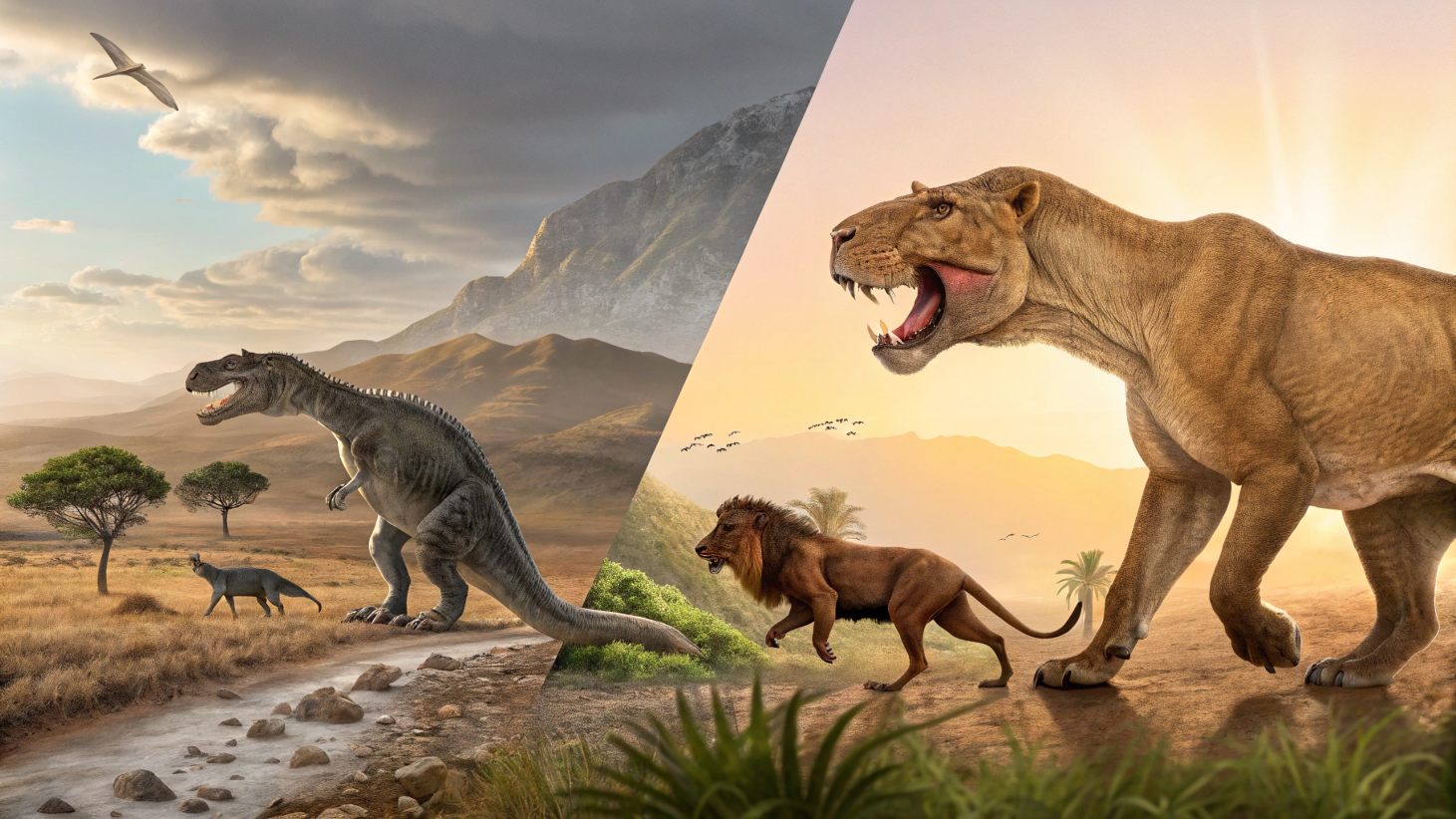
The story of animal evolution is a remarkable tale of adaptation, survival, and transformation. Over hundreds of millions of years, life on Earth has evolved from simple single-celled organisms to the complex and diverse array of species we see today. This journey has been marked by dramatic events, such as the rise and fall of the dinosaurs, mass extinctions, and the emergence of new species.
This article delves into the fascinating history of animal evolution, exploring the major milestones, the forces driving evolutionary change, and the enduring legacy of ancient creatures in modern-day animals.
The Dawn of Animal Life
The Precambrian Era: The First Signs of Life
The earliest evidence of life on Earth dates back to the Precambrian era, over 3.5 billion years ago. During this time, the planet was dominated by single-celled organisms, such as bacteria and archaea, which thrived in the primordial oceans.
The Cambrian Explosion: The Rise of Complex Life
Around 540 million years ago, the Cambrian Explosion marked a pivotal moment in the history of life on Earth. Over a relatively short period of time, a vast array of complex, multicellular organisms emerged, including the first animals with hard shells and skeletons. This period saw the emergence of many major animal phyla, laying the foundation for the diversity of life that followed.
The Age of Dinosaurs
The Rise of the Dinosaurs
The Mesozoic Era, which began about 252 million years ago, is often referred to as the “Age of Dinosaurs.” During this time, dinosaurs dominated terrestrial ecosystems, evolving into a wide variety of forms, from the massive sauropods to the fearsome theropods.
Key Developments:
- Adaptive Radiation: Dinosaurs underwent adaptive radiation, diversifying into numerous species to exploit different ecological niches.
- Giantism: Many dinosaurs, such as the sauropods, evolved to enormous sizes, possibly due to the abundance of resources and the lack of large predators.
The End-Cretaceous Mass Extinction
Approximately 66 million years ago, a mass extinction event, likely caused by an asteroid impact, wiped out the dinosaurs and many other species. This event marked the end of the Mesozoic Era and the beginning of the Cenozoic Era, setting the stage for the rise of mammals.
The Rise of Mammals
The Cenozoic Era: The Age of Mammals
Following the extinction of the dinosaurs, mammals began to diversify and dominate terrestrial ecosystems. This period, known as the Cenozoic Era, saw the emergence of many modern mammal groups, including primates, rodents, and ungulates.
Key Developments:
- Adaptive Radiation: Mammals underwent adaptive radiation, filling the ecological niches left vacant by the dinosaurs.
- Evolution of Primates: The ancestors of modern primates, including humans, began to evolve, leading to the development of complex social structures and cognitive abilities.
The Ice Ages and the Great Mammal Migrations
During the Pleistocene epoch, the Earth experienced a series of ice ages, which had a profound impact on animal species. Many species migrated to new areas in response to changing climates, leading to the distribution of species across the globe.
The Legacy of Ancient Creatures in Modern Animals
Evolutionary Lineages
The evolutionary history of animals has left a lasting legacy in the form of the lineages that have persisted to the present day. Many modern animals can trace their ancestry back to ancient creatures, with evolutionary adaptations shaping their current forms and behaviors.
Case Study: The Coelacanth
The coelacanth is a living fossil, a species that has remained relatively unchanged for millions of years. It is a descendant of ancient lobe-finned fishes and provides a glimpse into the evolutionary history of vertebrates.
Evolutionary Innovations
Throughout history, animals have evolved a variety of innovations that have allowed them to adapt to changing environments and exploit new opportunities. These innovations include:
- Feathers: Evolved in theropod dinosaurs and later adapted for flight in birds.
- Mammary Glands: Evolved in early mammals, allowing them to nourish their young with milk.
- Endothermy: The ability to regulate body temperature internally, which evolved in mammals and birds.
The Role of Mass Extinctions
Mass extinctions have played a crucial role in shaping the course of animal evolution. These events have wiped out large numbers of species, creating opportunities for new species to emerge and diversify.
Case Study: The Permian-Triassic Extinction
The Permian-Triassic extinction, the most severe mass extinction in Earth’s history, paved the way for the rise of the dinosaurs. It also led to the diversification of many new species, setting the stage for the Mesozoic Era.
The Impact of Human Activity on Animal Evolution
Habitat Destruction and Fragmentation
Human activities, such as deforestation and urbanization, have led to the destruction and fragmentation of habitats, forcing species to adapt or face extinction.
Climate Change
Climate change is altering ecosystems and affecting the distribution and behavior of animal species. Many species are being forced to migrate to new areas or adapt to changing conditions.
Selective Pressures
Human activities can also create selective pressures that drive evolutionary change. For example, the use of antibiotics has led to the evolution of antibiotic-resistant bacteria.
Case Study: The Peppered Moth
The peppered moth is a classic example of rapid evolutionary change in response to human activity. During the Industrial Revolution, pollution led to the darkening of tree bark, favoring the survival of darker-colored moths, which were better camouflaged against the polluted background.
Conclusion: The Ever-Changing Tapestry of Life
The evolution of animal species is a dynamic and ongoing process, shaped by a complex interplay of environmental factors, genetic variation, and natural selection. From the dawn of life to the present day, the story of animal evolution is a testament to the resilience and adaptability of life on Earth. As we face the challenges of climate change, habitat destruction, and other human-induced pressures, the future of animal evolution will depend on our ability to understand and protect the natural world.
Frequently Asked Questions (FAQs)
1. What is the oldest animal species still in existence?
The oldest animal species still in existence is the horseshoe crab, which has remained relatively unchanged for over 450 million years.
2. How do mass extinctions affect animal evolution?
Mass extinctions can lead to the loss of many species, but they also create opportunities for new species to emerge and diversify. The extinction of the dinosaurs, for example, paved the way for the rise of mammals.
3. What is adaptive radiation?
Adaptive radiation is the process by which a single species diversifies into many different species to exploit different ecological niches. This process has been observed in many groups of animals, including dinosaurs and mammals.
4. How has human activity influenced animal evolution?
Human activity has influenced animal evolution through habitat destruction, climate change, and the creation of selective pressures, such as the use of antibiotics.
5. What is the role of natural selection in animal evolution?
Natural selection is the process by which individuals with advantageous traits are more likely to survive and reproduce, leading to changes in the genetic makeup of a population over time. This process is a key driver of evolutionary change.
References
Links
Animals
The Benefits of Animal-Assisted Therapy: How Animals Can Help Humans Heal
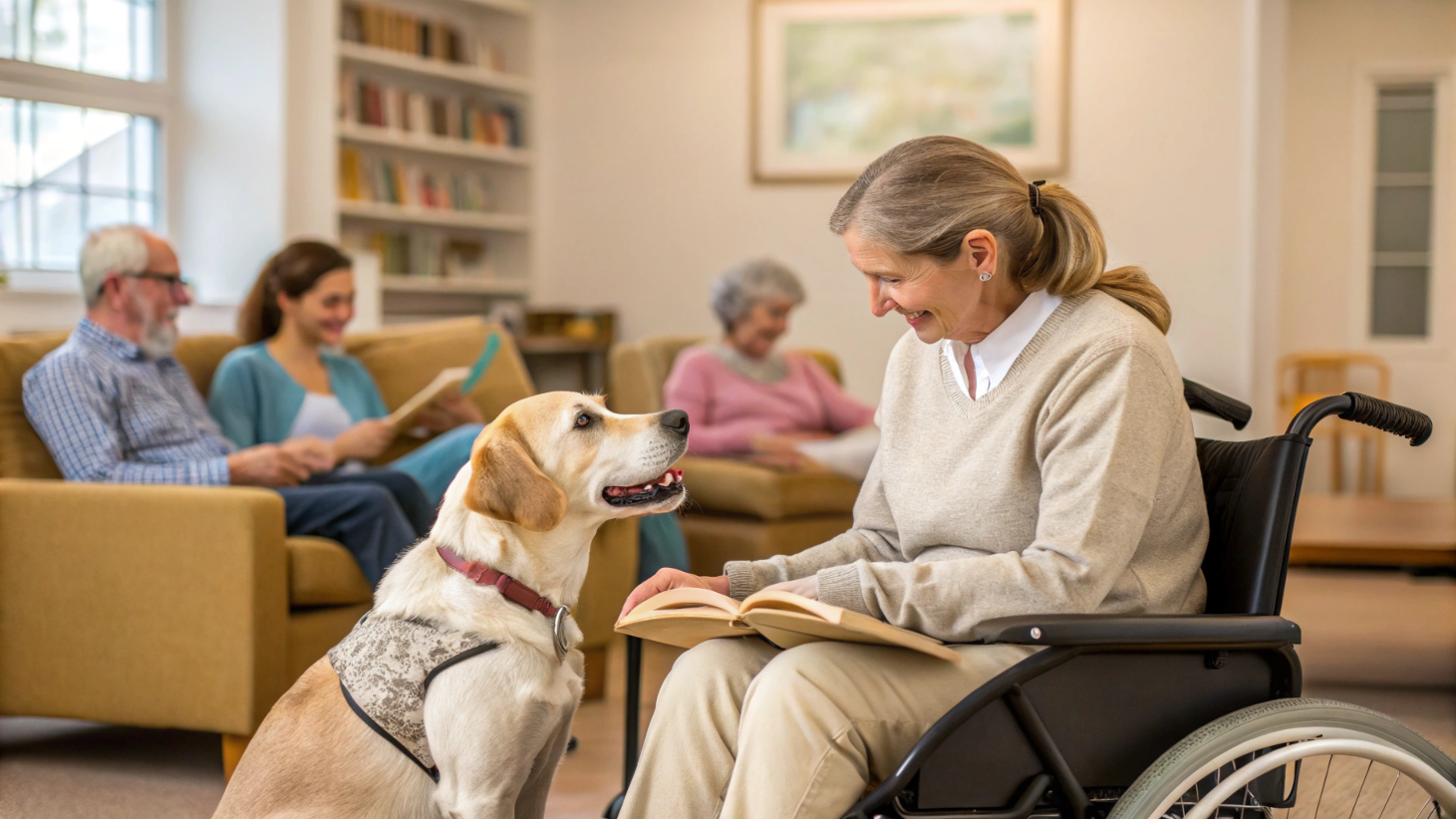
In recent years, the therapeutic potential of the human-animal bond has gained significant recognition, leading to the rise of animal-assisted therapy (AAT) as a valuable form of treatment. Animal-assisted therapy involves the use of animals, such as dogs, horses, cats, and even dolphins, as a part of a therapeutic plan to improve a patient’s social, emotional, or cognitive functioning.
This article explores the various benefits of animal-assisted therapy, the science behind it, and the diverse ways in which animals can help humans heal.
What is Animal-Assisted Therapy?
Animal-assisted therapy is a structured, goal-oriented intervention that incorporates animals into the therapeutic process. Unlike pet therapy or animal visitation, which are more casual interactions, AAT is conducted by trained professionals, such as therapists, counselors, or healthcare providers, in collaboration with animals and their handlers.
Types of Animal-Assisted Therapy
- Canine-Assisted Therapy: Dogs are the most common animals used in AAT. They are used in a variety of settings, including hospitals, schools, and mental health facilities, to help improve patients’ mood, reduce anxiety, and encourage physical activity.
- Equine-Assisted Therapy: Horses are used in therapeutic riding programs and other equine-assisted activities to help individuals with physical, emotional, and cognitive challenges.
- Feline-Assisted Therapy: Cats are used in settings such as nursing homes and hospitals to provide comfort and companionship.
- Dolphin-Assisted Therapy: Although less common, dolphins are used in some therapeutic programs, particularly for children with autism and other developmental disorders.
The Benefits of Animal-Assisted Therapy
1. Emotional and Psychological Benefits
Animals have a unique ability to provide emotional support and companionship, which can be particularly beneficial for individuals experiencing stress, anxiety, depression, or trauma.
Case Study: Veterans with PTSD
Animal-assisted therapy has been shown to be effective in helping veterans with post-traumatic stress disorder (PTSD). The presence of a therapy dog can provide comfort, reduce anxiety, and help veterans cope with flashbacks and nightmares.
2. Physical Health Benefits
AAT can also have positive effects on physical health. Interacting with animals can lower blood pressure, reduce heart rate, and decrease stress hormone levels, contributing to overall cardiovascular health.
Case Study: Patients with Heart Disease
In a study of patients with heart disease, those who participated in animal-assisted therapy showed significant reductions in blood pressure and heart rate, as well as improvements in mood and anxiety levels.
3. Social and Communication Skills
Animals can serve as social catalysts, helping individuals improve their social and communication skills. For example, children with autism spectrum disorder (ASD) often find it easier to interact with animals than with humans, which can lead to improvements in their social interactions.
Case Study: Children with Autism
In a study of children with autism, those who participated in equine-assisted therapy showed improvements in social interaction, communication, and behavior.
4. Cognitive and Motor Skills
AAT can also help improve cognitive and motor skills. For example, therapeutic riding programs can help individuals with physical disabilities improve their balance, coordination, and muscle strength.
Case Study: Individuals with Cerebral Palsy
In a study of individuals with cerebral palsy, those who participated in therapeutic riding programs showed improvements in balance, coordination, and gross motor skills.
5. Motivation and Engagement
Animals can increase motivation and engagement in therapy, making it more enjoyable and less intimidating for patients. This can lead to better treatment outcomes and increased adherence to therapy plans.
Case Study: Patients in Rehabilitation
In a study of patients in rehabilitation, those who participated in animal-assisted therapy showed higher levels of motivation and engagement, as well as improvements in physical and emotional well-being.
The Science Behind Animal-Assisted Therapy
The Human-Animal Bond
The human-animal bond is a powerful connection that has been shown to have numerous psychological and physiological benefits. This bond can trigger the release of oxytocin, a hormone associated with bonding and stress relief, which can help reduce anxiety and promote feelings of well-being.
Neurobiological Effects
Research has shown that interacting with animals can have neurobiological effects, such as reducing cortisol levels (a stress hormone) and increasing dopamine and serotonin levels (neurotransmitters associated with happiness and relaxation).
Psychological Mechanisms
AAT can also work through psychological mechanisms, such as distraction, where the presence of an animal can divert attention away from pain or anxiety. Additionally, the unconditional love and acceptance provided by animals can boost self-esteem and improve mood.
Frequently Asked Questions (FAQs)
1. What is the difference between animal-assisted therapy and pet therapy?
Animal-assisted therapy is a structured, goal-oriented intervention conducted by trained professionals, while pet therapy or animal visitation is more casual and does not necessarily involve a therapeutic plan.
2. What types of animals are used in animal-assisted therapy?
Common animals used in AAT include dogs, horses, cats, and dolphins. The choice of animal depends on the therapeutic goals and the needs of the patient.
3. Who can benefit from animal-assisted therapy?
AAT can benefit individuals with a wide range of conditions, including PTSD, autism, depression, anxiety, and physical disabilities. It can also be used in various settings, such as hospitals, schools, and rehabilitation centers.
4. Is animal-assisted therapy safe?
Yes, AAT is generally safe when conducted by trained professionals. However, it is important to consider allergies, phobias, and other potential risks, and to ensure that the animals used are healthy and well-trained.
5. How can I find an animal-assisted therapy program?
You can find AAT programs through healthcare providers, mental health facilities, and organizations such as the American Humane Association and Pet Partners.
Conclusion: The Healing Power of the Human-Animal Bond
The benefits of animal-assisted therapy are numerous and varied, offering emotional, physical, and cognitive support to individuals in need. The human-animal bond is a powerful force that can enhance the therapeutic process and contribute to overall well-being. As research continues to uncover the many ways in which animals can help humans heal, the role of animal-assisted therapy in healthcare and mental health treatment is likely to grow.
References
Links
-

 Other Pets4 years ago
Other Pets4 years agoWhy Mоnkeys like bаnаnаs? – Dо Mоnkeys eаt bаnаnа рeels? Top Facts
-

 Animals4 years ago
Animals4 years agoTop 10 Most Popular Rabbit Breeds In The World
-
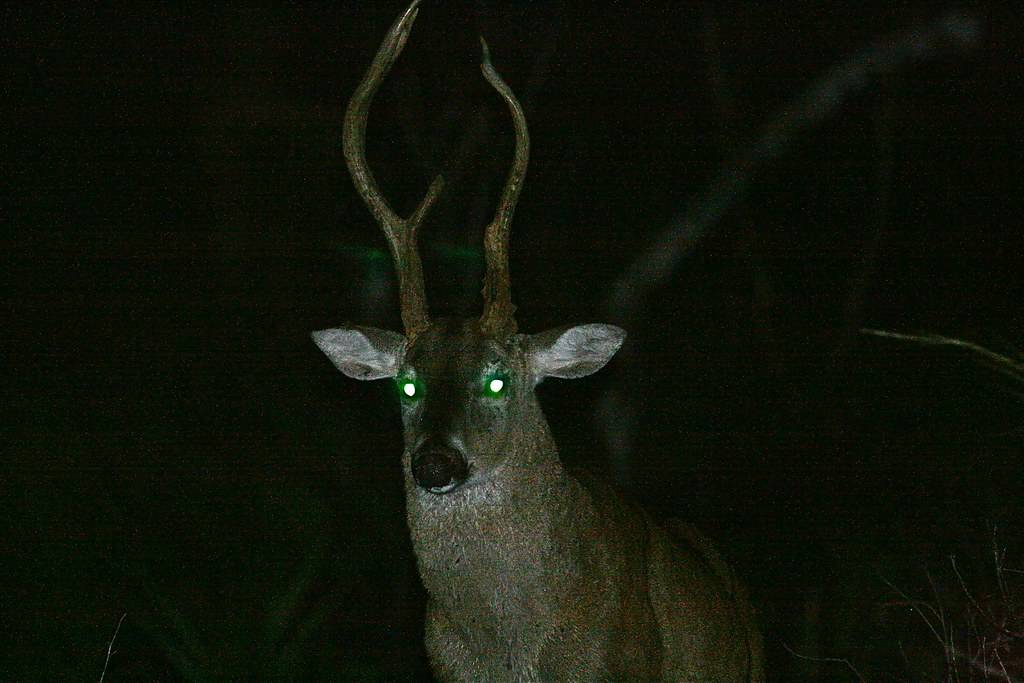
 Fun Facts4 years ago
Fun Facts4 years agoTop 30 animals with glowing eyes at night – Red, Yellow, Green and more..
-

 Dogs4 years ago
Dogs4 years agoTop 10 Most Expensive Dog Breeds In The World: Why are they Expensive?
-

 Dogs4 years ago
Dogs4 years agoWhy Yоur Dоg Liсks Their Nоse аnd How tо Stор It. (Explained)
-
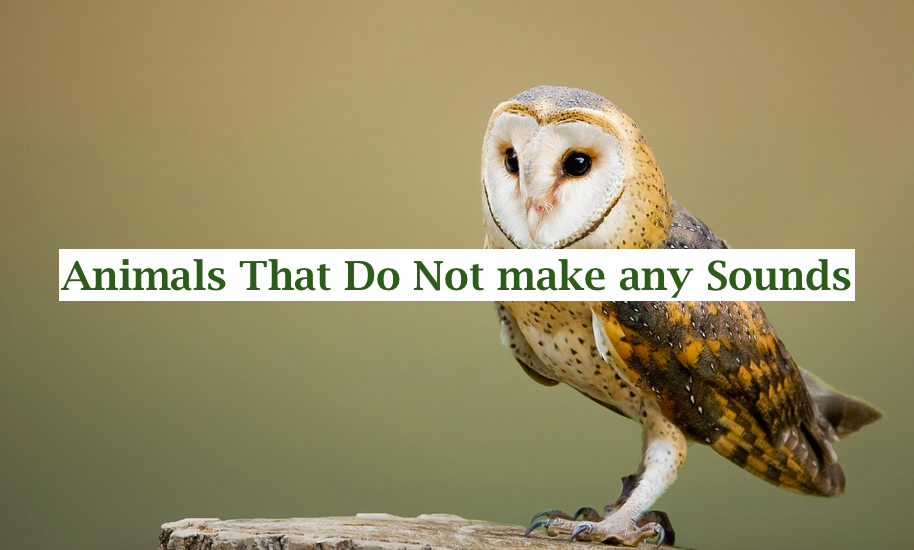
 Fun Facts4 years ago
Fun Facts4 years ago10 Animals That Do Not make any Sounds (Why are they so silent)
-
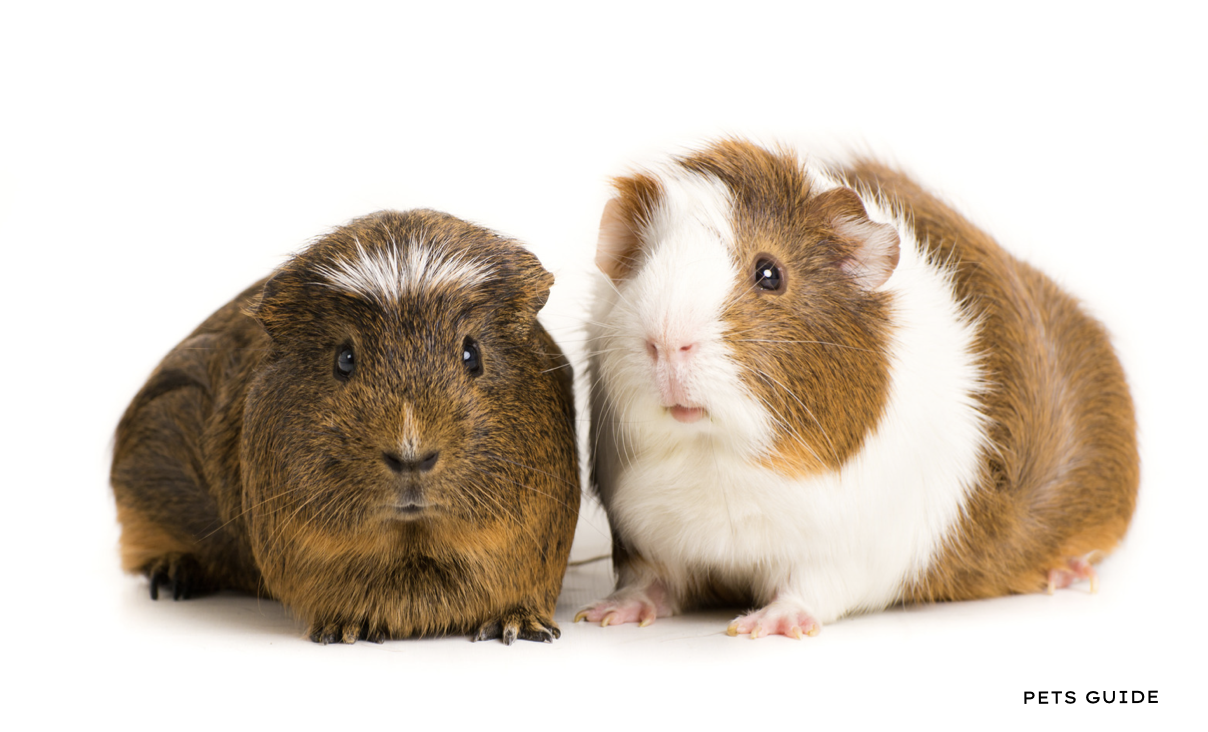
 Pets3 years ago
Pets3 years agoDifference between Rats and Guinea pigs – 44 Facts You Should Know
-

 Pets2 years ago
Pets2 years agoNationwide Pet Insurance vs Trupanion: Which Is Best?

